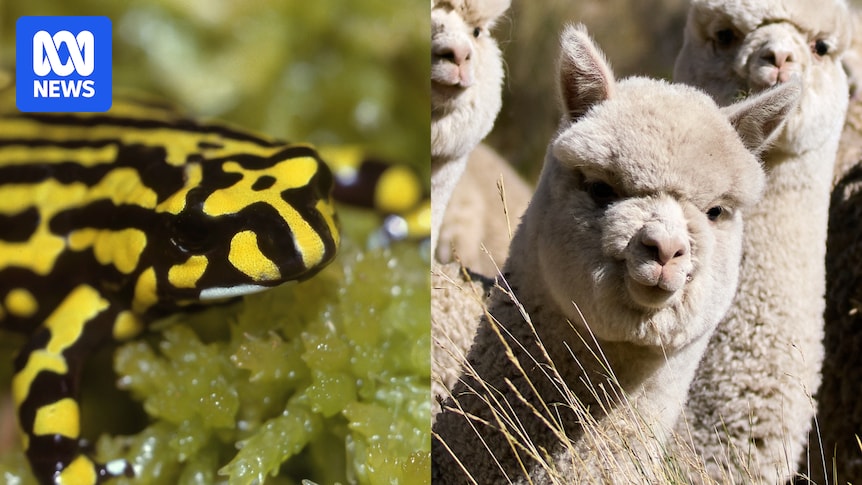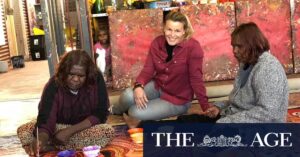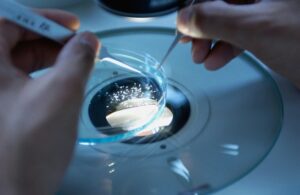
Frogs that are part alpaca and other genetically engineered wildlife could soon be running and hopping around Australia. Advances in DNA editing tools now allow scientists to alter the genetic instructions of living organisms, potentially offering solutions to issues like disease, invasive pests, and climate change. Genetically altered mosquitoes, quolls, and cane toads may soon be released into the Australian wild as part of these efforts.
In particular, the technology could help Australia’s 200-plus frog species become resistant to a deadly disease introduced in the 1970s. The chytrid fungus, a highly virulent pathogen, causes chytridiomycosis, a disease that damages a frog’s skin, affecting its ability to breathe and absorb water. According to University of Melbourne zoologist Stephen Frankenberg, “There’s just no way of really protecting frogs around the world against this disease. Although you can treat the individual frogs … you can never get rid of the fungus from the environment.”
Alpacas: A Woolly Solution to a Hairy Problem
Dr. Frankenberg is exploring genetic engineering to prevent frogs from contracting the disease in the first place, using alpacas as a key component. Alpacas, along with other members of the camelid family, possess a unique ability: their immune systems produce tiny antibodies, known as “nanobodies,” which can be harnessed for other species.
These nanobodies are created when an alpaca is infected with a pathogen, and they can be introduced into other species through a process involving transgenes. Transgenes are genes taken from one organism and introduced into another, facilitated by genetic tools like CRISPR-Cas9, which allows precise DNA edits.
Dr. Frankenberg’s plan involves infecting alpacas with chytridiomycosis to identify the antibodies they produce. “That can then be used in a genetic engineering solution to chytrid infection,” he explained. The aim is to inject the engineered genetic material into frog eggs, allowing the frogs to inherit the resistance and spread it through interbreeding once released into the wild.
De-Extinction and Conservation: A New Frontier?
Meanwhile, US gene technology company Colossal is funding Dr. Frankenberg’s project with $3 million over three years. The company is known for its ambitious genetic projects, including attempts to recreate extinct species like the mammoth and dodo. Earlier this year, Colossal claimed to have engineered a proxy of the long-extinct dire wolf by making 20 changes to 15 genes of grey wolves.
Colossal’s interest in de-extinction extends to the “Tasmanian tiger” or thylacine, which last existed in 1936. Andrew Pask, a University of Melbourne researcher and Colossal’s chief biology officer, envisions thylacines “roaming wild across all of Tasmania” again. His team has been working to map the thylacine genome using historical samples, with a study expected to be published later this year.
Professor Pask’s lab plans to make millions of genetic edits to a living relative of the thylacine, such as the fat-tailed dunnart, to recreate the extinct species. The thylacine de-extinction project could also aid in conserving other native animals, with potential applications for species like the northern quoll, which is threatened by the invasive cane toad.
Potential Risks and Ethical Considerations
Deakin University ecologist Euan Ritchie cautions that while genetic editing offers exciting conservation possibilities, it also poses risks of unintended consequences. “What if all of a sudden because cane toads are edible to all these northern quolls, you end up with huge numbers of northern quolls? And how might they affect other species that also share that environment?” he questioned.
Historically, biological controls in Australia have seen both successes and failures, such as the introduction of rabbit viruses and the catastrophic spread of cane toads. Dr. Frankenberg suggests mitigating risks by initially releasing gene-edited quolls on islands to monitor their ecological impact before considering mainland releases.
Colossal’s development of an artificial womb prototype could further revolutionize conservation efforts, allowing for mass production of marsupials without surrogate mothers. “That could be a game-changer for us in Australia,” Professor Pask noted, emphasizing the potential to quickly repopulate areas devastated by bushfires with native species.
Museums Victoria, in collaboration with the University of Melbourne, is building a biobank to preserve cell samples from Australia’s unique species, safeguarding against extinction. Conservation geneticist Joanna Sumner highlighted the project’s progress, noting thousands of samples from 77 species have been collected over four years. “We are using a lot of techniques that have been used in human biology for years,” she said. “But now the technology is better, it’s cheaper, and we’re able to apply these techniques to wildlife.”
As gene editing technology continues to evolve, the potential to reshape conservation efforts is immense. However, the ethical and ecological implications of such interventions remain a topic of robust debate among scientists and policymakers alike.







